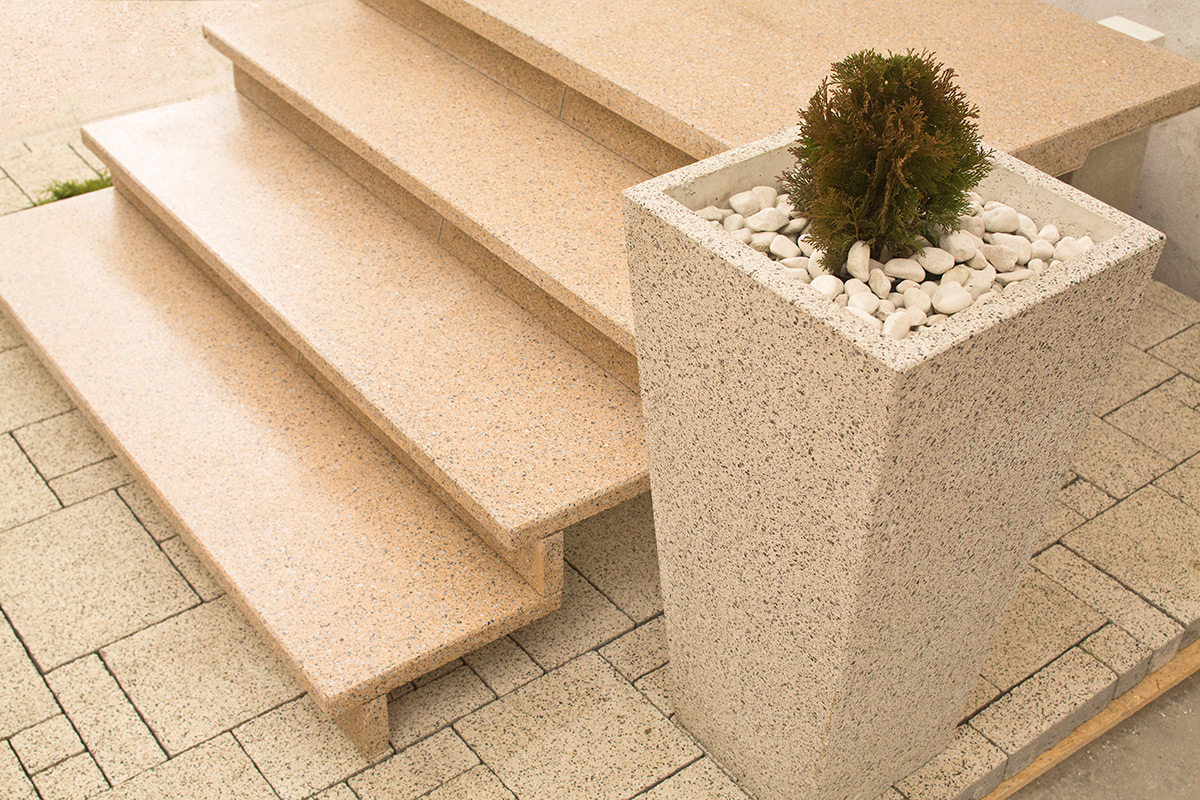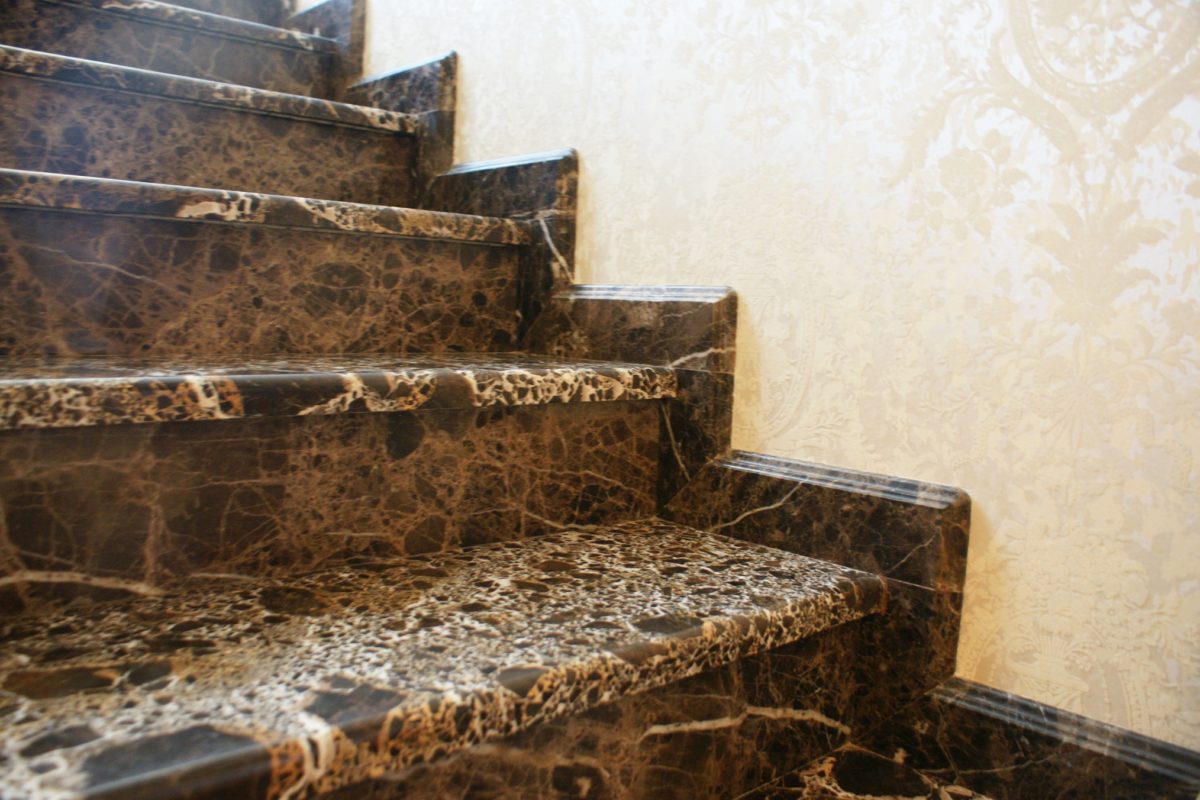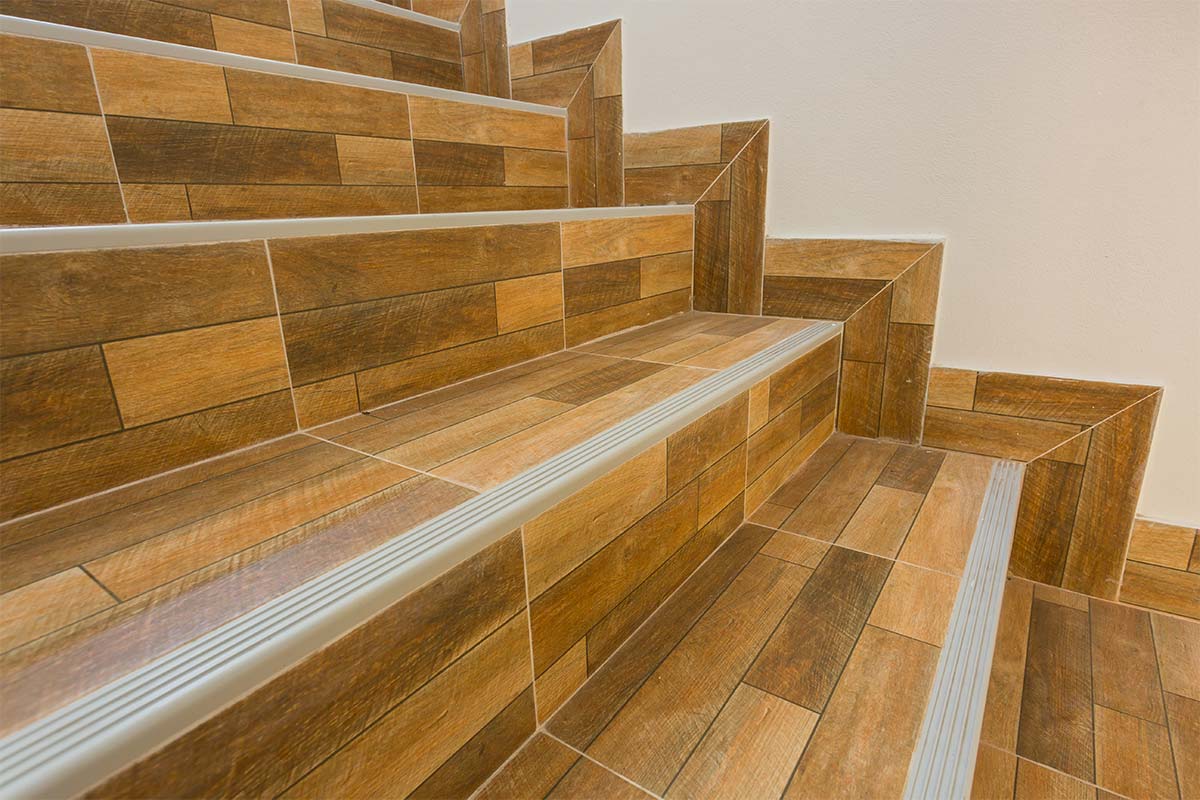Before cleaning ceramic tiles, it’s a good idea that you should know the proper methods and to do a spot test on a tiny, out-of-the-way piece of tile, like the bottom of a stair. Your flooring will not suffer any harm or discoloration as a result of this measure.
When it comes to cleaning, the fundamental procedure is always the same, even if various kinds of tile may call for different kinds of considerations. Here it is!
Sweep using a broom and dustpan, or use a vacuum cleaner with a soft-bristled brush attachment to cast aside the loose dust and grime.
Make use of a cleaning solution: if necessary, dilute the tile cleaner that you use with warm water. The most effective method of cleaning will be determined by the kind of flooring that is being cleaned. Get confirmation from the manufacturer of your flooring on whether or not a certain cleaning solution is appropriate for use on it.
Mop the tile: If you want the greatest results, you should be sure to use a chamois mop. The mop should be moist but not dripping wet after dipping it in water and squeezing off the excess liquid to remove excess water. Be thorough so that you don’t overlook any stains that are particularly difficult to remove.

Refill the bucket with new water; using old water to clean the tile is a waste of time. To maintain a clear appearance, older water should be discarded on a regular basis and replaced with fresh water.
To dry the tile immediately after cleaning the floor, use a clean towel, ideally one made of microfiber, to dry the floor. This will stop water stains from forming.
Remove any trace of soap: The end result should be a clean and sparkling floor after cleaning, but accidents may and do happen. After washing, if there is any residue or a hazy haze, you may get rid of it by giving it a brief spray with an all-purpose cleaner and then wiping it off. Check to see that the cleaner is not abrasive and is suitable for your floor. After that, use a fresh towel made of microfiber to dry the tile once again.
Cleaning the grout is the finishing touch, so get rid of any dirt or grime that may be hidden in the lines between the tiles. There is a whole section below devoted to providing guidance on how to clean grout.
Tip: Some individuals believe that cleaning and drying tile floors one piece at a time is the most effective method. This provides you with more time to clean and dry the floor, so you won’t have to hurry to finish it before it dries completely.
Now that we’ve covered the fundamentals, it’s time to start thinking about the particular kind of flooring you want. Tiles made of ceramic, porcelain, or real stone, do you have any of those?
Because each kind is unique in its own way, finishing the task can need for the use of a specialized item or instrument.

Find out how to properly clean each kind of tile in the next section.
How to Clean Tile Made of Ceramic
There are two distinct approaches to cleaning ceramic tile, one of which depends on whether the tile is glazed.
Glazed ceramic tile requires the use of a home cleaner that is low in volatile organic compounds and will not harm tile grout when applied. It is OK to use a cleaner that gets rid of soap scum and water deposits on the tile that surrounds showers and bathtubs while you are cleaning the tile. Never use strong chemicals that include acids or ammonia since doing so might cause the tile or the grout to get damaged.
Unglazed ceramic tile: When cleaning unglazed ceramic surfaces, you should always use a concentrated cleaning agent that has a pH that is neutral. Check to see if it is compatible not just with the tile, but also with the grout.
How to Clean Tile Made of Porcelain
Glazed porcelain tile is more high-maintenance than its unglazed cousin, although both types are available.
Glazed porcelain tile: Glazed tile may be cleaned with warm water and a cleaner that is designed for a variety of surfaces. When selecting a cleaning solution, check to see that it does not include acid or ammonia. Both of these substances may cause damage to the surface of the tile as well as the grout between the tiles.
When cleaning unglazed porcelain tile, use the same protocol as you would for cleaning ceramic tile, and be sure to use a concentrated pH-neutral cleaner. Check to see if it is likewise suitable for use with the grout.

How to Clean Tile Comprised of Natural Stone or Marble
Natural stone tile, in contrast to glazed porcelain and ceramic tile, has a porous surface. You will need to clean it in a different manner because of this.
Never use an acidic cleaner; stay away from any products that include vinegar, lemon, or any other kind of acid. Acidic cleansers induce discoloration in natural stone.
Any brushes or brooms you use must have soft bristles in order to avoid scratching your surface. Never utilize anything that has bristles made of hard or metal materials. If not, you run the danger of only scraping the surface.
Utilize a natural stone cleaner that can be purchased from a store: If you are unsure which cleaner to use, look for one that is formulated especially for natural stone.
How to Clean the Grout Between Tiles
You can’t just focus on the tiles in your bathroom and ignore the grout in between them! Ensuring that your grout is adequately sealed is the most crucial step to maintain clean grout lines. Grout sealant application serves as the first line of protection against dirt. However, this is not the ultimate guide on cleaning grout and should not be seen as such.
When you pull out the cleaning products, working slowly and carefully is the most effective method to make the grout completely clean and shiny. You ought to begin by using a gentle cleanser, and if any filth or stains is still there, you should go on to more caustic chemicals.
In order to ensure that a new cleaning solution will not cause harm to your flooring, it should always be tested in a discrete area first. Additionally, it is essential that you consult the guidelines provided by the flooring manufacturer to guarantee that the aesthetic value of your floor will not be compromised.

Make use of these suggestions to restore the floor’s pristine appearance. They are ordered from the least aggressive to the most aggressive, so start at the very bottom of the list and work your way up.
Use dish soap: To make a gentle cleaning solution, combine hot water with dish soap in the appropriate proportions. Scrubbing with the soap combination should have no trouble removing dirt and filth from the surface to it is applied to.
Make a paste with baking soda by combining water and baking soda to form a paste, and then apply it to the spaces in between the tiles. After letting the paste sit for the night, clean it off with a soft bristled brush in the morning.
Try a professional grout cleaner if you are at a loss for where to begin the cleaning process. A specialist grout cleaner may be purchased from a retailer. It eliminates the need for guessing throughout the cleaning process and guarantees that soap scum, oils, and mildew stains will be removed completely.
If a steam cleaner is at your disposal, try carefully applying steam to the grout lines.The heat and moisture will kill any mold or bacteria that may be present on the porous surface, and they will also release any dirt that has been compacted over time. However, you should only do this very seldom since prolonged exposure to steam might cause harm.
What about sealing the grout, though?
How to Put a Stopper in Grout
Because the protective layer eventually wears away, you should reseal the grout once per year. If the water beads up on the surface after you sprinkle some water over the grout, the seal needs to be renewed and done as soon as possible. If it does, the seal is not compromised in any way. On the other hand, resealing the grout is necessary if the water penetrates it in any way.
To begin sealing grout, choose the grout sealant and applicator that will meet your requirements in the most effective manner. The sealer should then be applied in stages while making certain that the whole grout surface is completely covered. To maintain a clean and organized look, remove any excess sealer from the tiles before it has a chance to dry.

Allow the sealant to cure completely, and then apply a second application if directed to do so by the manufacturer. It will need to cure for around forty-eight hours before you will be able to evaluate its quality by sprinkling water over the top.
How Frequently Should Ceramic Tile Floors Be Cleaned?
To prevent an excessive accumulation of dust and filth on your floor, it is helpful to establish a pattern for cleaning it as well as a regular cleaning schedule. If you follow this routine, you will always have floor tiles that are squeaky clean.
On a Weekly Basis
You need to “dry clean” the tile, also known as sweep or vacuum the tile, at least once a week or anytime you discover dirt on the floor. This means that you should sweep all tile floors. A lot of grit may make the surface of your tile appear dull. When it comes to vacuums, be sure to choose an attachment with soft bristles.
Mop the tile in the bathroom. In order to keep the floor in the bathroom clean and sanitary, you need “wet clean” it once a week, which is another way of saying mop it.
every alternating week
Mop all of the other tile floors: Because the flooring in the living room and kitchen won’t become as dirty as rapidly as the floor in the bathroom, you may reduce the frequency of your mopping routine to once every two weeks.
About once every two to three months
Grout should be spot cleaned: To achieve a polished appearance, the grout should be spot cleaned every few months, and any stains or spots should be removed. When others see that even the grout in your tiles is spotless, they will realize that you truly do have your life together.

Tile Cleaning Frequently Asked Questions
Which tile cleaner is the most effective for cleaning ceramic floors?
When it comes to cleaning ceramic tile, many people find that a solution consisting of soap and warm water works the best. This is because of the fact that it is not an acidic solution, and as a result, it will not do any harm to the tile flooring that you have. There are also specialist tile cleaning solutions that have a pH that is neutral, which removes the element of guessing involved in selecting the appropriate tile cleaner.
How often should you clean the tile flooring in your home?
At the very least, once every week, or anytime there is visible dust or grime on the surface, tile floors should be swept or vacuumed clean. In order to maintain a clean appearance, the tile floors in the bathroom should be cleaned once a week, although the tile floors in the other sections of the house only need to be mopped once every two weeks. Additionally, at the absolute minimum, tile grout should be cleaned once every few months.
What is the most efficacious method for cleaning a floor that is tiled?
To begin the process of cleaning a tile floor, remove any dirt and dust that may be present by sweeping or vacuuming. The surface should next be mopped with a solution consisting of soap and water or a product designed specifically for cleaning tile. At the absolute least, you should sweep at least once every week, mop at least once every other week, and clean the grout between the tiles at least once every few months.

Does vinegar ruin porcelain tile?
Vinegar, being an acid, may degrade the surface of natural stone tiles, although it may be safe to use on ceramic or porcelain floors. If you need to know for sure, you might contact the flooring manufacturer. You may always use a combination of soap and water, or you can buy a tile cleaning solution that has a pH that is neutral on the market as an alternative to using vinegar. Before beginning the cleaning process, you should test the vinegar in a hidden area to ensure that it will not harm the tile surface.
Is it possible to use bleach to clean the tile?
Bleach cleaners designed for home use, such as oxygen powder bleach or chlorine bleach, may sometimes be used to clean porcelain and ceramic tiles, but they should never be used on real stone. Check the instructions provided by the flooring manufacturer to see whether or not bleach may be used to clean your tile. Before beginning the cleaning process, you should test the bleach in a hidden area to ensure that it will not harm the tile surface.











Your comment submitted.